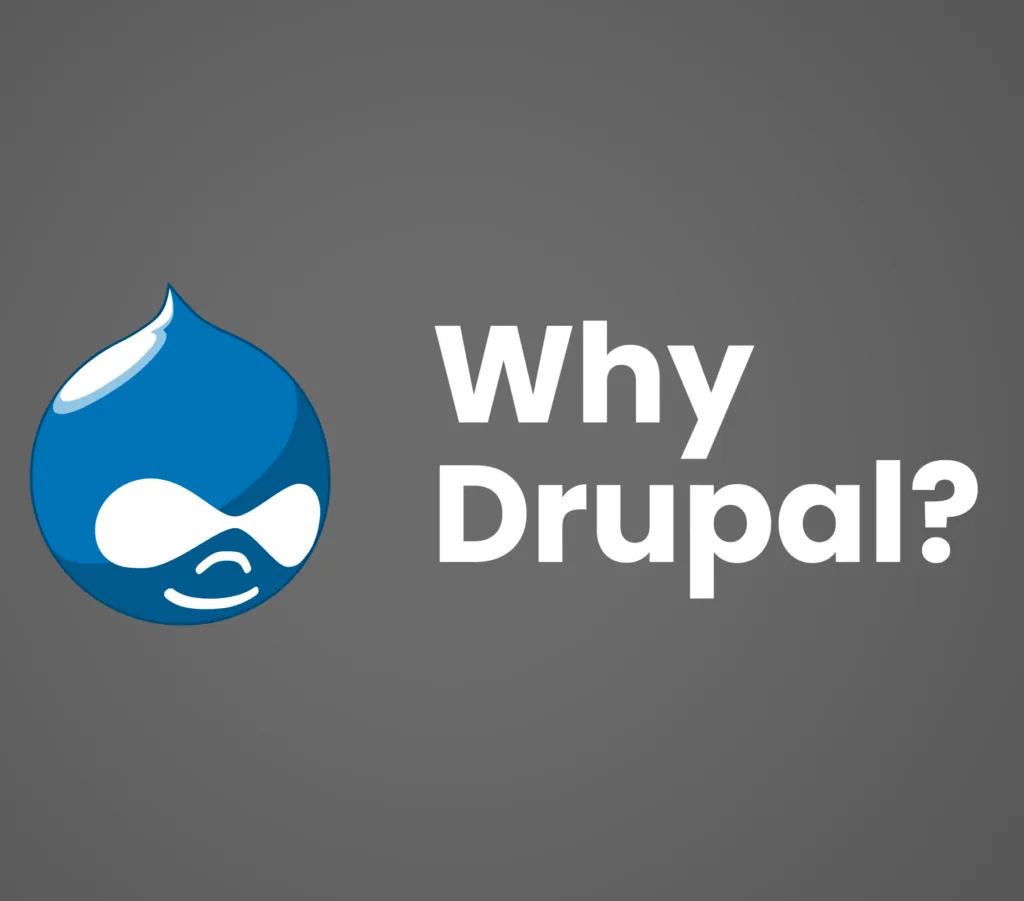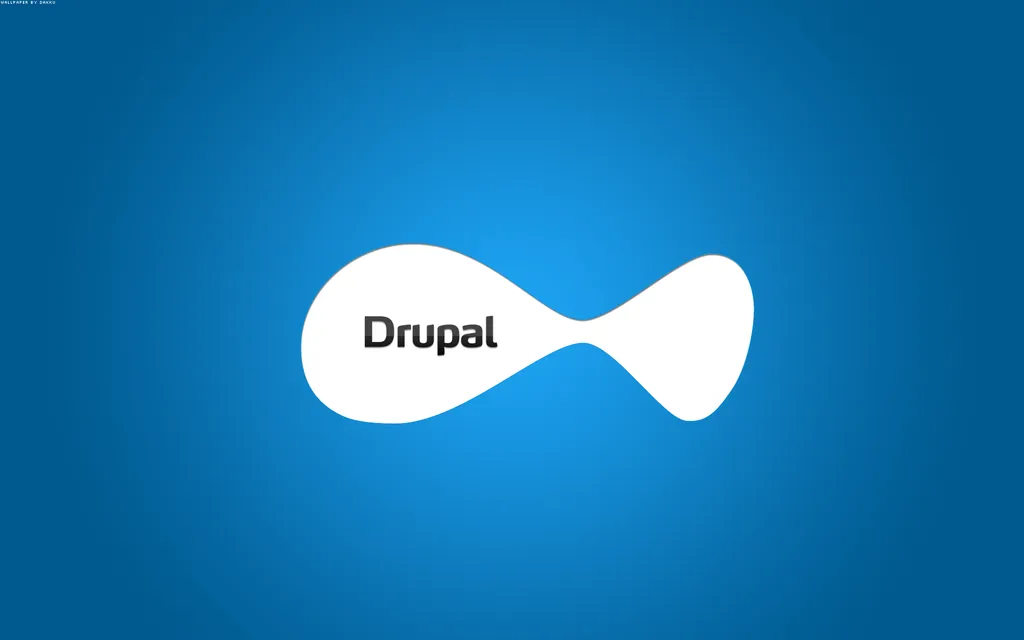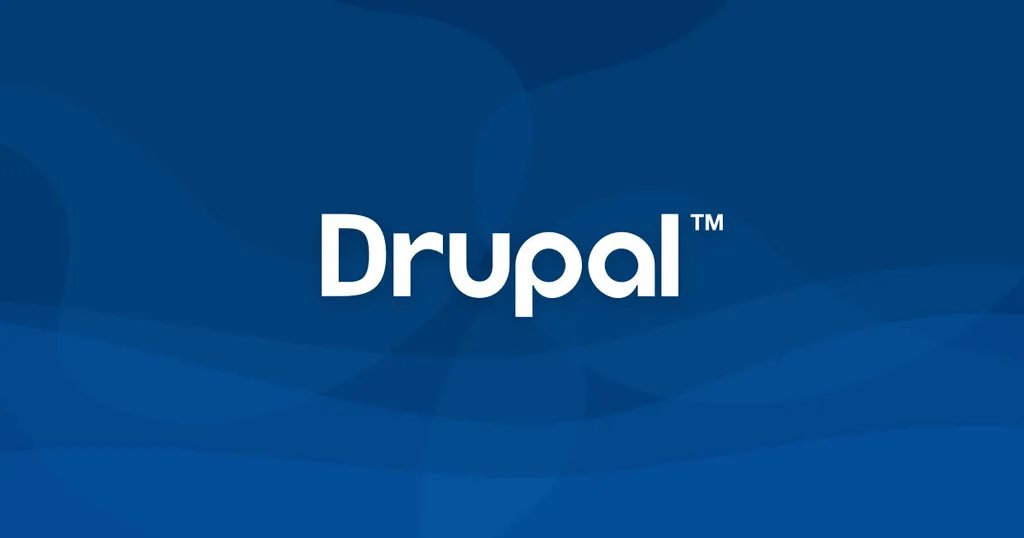Drupal could be The KING !!!
In the dynamic realm of web development, the choice of a content management system (CMS) can significantly influence the success and functionality of your online presence. One CMS that has consistently stood out for its flexibility, scalability, and robustness is Drupal. In this post, we’ll take you on a journey through the world of Drupal, exploring its history, features, advantages, and some remarkable examples of websites powered by this formidable platform.
1. The Evolution of Drupal: A Brief Historical Perspective
In the early 2000s, a Belgian computer scientist named Dries Buytaert embarked on a journey that would reshape the digital landscape. What began as a simple message board project known as “Drop” eventually blossomed into the renowned open-source CMS we know today as Drupal. The name “Drupal” is derived from the Dutch word “druppel,” meaning “drop,” symbolizing its origin as a drop of water in the vast sea of web development.
2. Key Features That Define Drupal’s Excellence
At the heart of Drupal’s appeal lies its rich array of features that empower developers and content creators alike:
a. Modular Architecture: Drupal’s modular structure provides the foundation for endless customization. Developers can extend core functionality by creating and integrating custom modules, tailoring websites to meet specific needs.
b. Content Management Mastery: Effortlessly create, edit, organize, and publish diverse content types, from articles and blog posts to multimedia elements such as images and videos.
c. Theming and Visual Brilliance: The theming system allows developers to craft visually stunning, responsive themes, ensuring seamless user experiences across a multitude of devices and screen sizes.
d. Scalability and Performance: Drupal’s exceptional performance capabilities make it a preferred choice for high-traffic websites. Employ caching mechanisms and database optimization to ensure your site remains snappy and responsive.
e. Robust Security Measures: Security is paramount in today’s digital landscape. Drupal boasts a dedicated security team that diligently monitors and addresses vulnerabilities, safeguarding your website against potential threats.
f. Multilingual Empowerment: Reach a global audience by seamlessly translating your website into multiple languages, enhancing user engagement and accessibility.
g. Flourishing Community and Contributed Modules: Drupal’s vibrant community has contributed thousands of modules and themes, enabling users to augment and expand Drupal’s functionality without reinventing the wheel.
3. Flourishing in the Web Development Ecosystem
Drupal’s versatility positions it as a go-to choice for an array of projects:
a. Empowering Corporations: Large corporations and organizations harness Drupal’s prowess to manage extensive content, user accounts, and complex workflows, creating a seamless digital experience.
b. E-Commerce Excellence: Drupal Commerce transforms the platform into a robust e-commerce solution, equipping online entrepreneurs with the tools to establish thriving digital storefronts.
c. Government and Nonprofits: Government agencies and nonprofits leverage Drupal’s capabilities to disseminate information, foster engagement, and serve the public good.
d. Academic Achievements: Educational institutions turn to Drupal to manage online courses, resources, and student portals, enhancing the learning experience for students worldwide.
e. Community Building: Harness the power of Drupal to create engaging online communities, forums, and social networking platforms, connecting individuals who share common interests.
4. Advantages and Considerations
a. Advantages:
Flexibility and Customization: Drupal’s modular architecture enables tailor-made solutions, ensuring your website aligns precisely with your vision and goals.
Community Support: The Drupal community is a treasure trove of knowledge, offering support, troubleshooting, and a platform for collaborative learning.
Performance Prowess: Drupal’s performance optimization features make it a reliable choice for websites of varying scales, from modest blogs to global enterprises.
Security Focus: Regular updates and a proactive security team bolster Drupal’s defenses against potential vulnerabilities, ensuring your site’s safety.
b. Considerations:
Learning Curve: Drupal’s extensive capabilities may require a learning curve, especially for newcomers to web development.
Complexity: While flexibility is an asset, intricate customization can lead to complexity, demanding careful planning and execution.
Resource Intensity: Robust features may translate to higher resource requirements, both in terms of server capacity and development time.
5. Notable Examples of Drupal’s Triumph
a. The White House: The official website of the United States’ White House runs on Drupal, underscoring its ability to support high-profile and high-traffic sites.
b. The Economist: A reputable news and business publication, The Economist, trusts Drupal to deliver engaging content to a global readership.
c. NASA: Even the stars align with Drupal, as NASA employs the platform to manage its extensive online content and engage with space enthusiasts worldwide.
d. Grammy Awards: The prestigious Grammy Awards website showcases Drupal’s aptitude for providing information, media, and interactive experiences.
6. Embracing the Future with Drupal
As the digital landscape continues to evolve, Drupal remains an influential player, poised to adapt and thrive. Its flexibility, scalability, and community-driven nature ensure its relevance in an ever-changing world.
In the grand tapestry of CMS options, Drupal shines as a multifaceted gem, capable of creating websites that captivate, engage, and empower. Whether you’re a corporate giant, an aspiring entrepreneur, a government entity, or a passionate content creator, Drupal stands ready to be your partner in digital innovation.
So, as you embark on your web development journey, consider Drupal—a dynamic force that transforms visions into digital realities, and a testament to the boundless possibilities that technology can offer.

Exploring Drupal’s Unique Place Among CMS Giants
Drupal, like any other content management system (CMS), has its own set of strengths and weaknesses that differentiate it from other CMS platforms. Here’s a comparison of Drupal with some other popular CMS options:
1. Drupal vs. WordPress:
Drupal:
- Offers more flexibility for complex and highly customized websites.
- Better suited for large-scale and enterprise-level websites with intricate content structures and workflows.
- Stronger security features out of the box.
- More developer-oriented, making it ideal for those with coding skills.
WordPress:
- User-friendly and easy to set up, suitable for beginners.
- Extensive library of themes and plugins for quick customization.
- Well-suited for blogs, small-to-medium websites, and simple e-commerce.
- May require additional plugins for advanced features and security.
2. Drupal vs. Joomla:
Drupal:
- More robust and scalable for larger websites with complex content needs.
- Greater flexibility in terms of content types and customization.
- Offers a higher learning curve but provides more power for customization.
- Best for organizations with experienced developers.
Joomla:
- Offers a middle ground between Drupal’s complexity and WordPress’s simplicity.
- Suitable for small-to-medium websites and e-commerce.
- Intuitive for beginners, with a moderate learning curve.
- Provides a balance between out-of-the-box features and customization.
3. Drupal vs. Magento:
Drupal:
- Offers flexibility for various types of websites, not just e-commerce.
- Suitable for content-heavy websites and online communities.
- More diverse range of available modules.
- Requires more development expertise for advanced customization.
Magento:
- Specialized for e-commerce, providing robust features for online stores.
- Offers extensive product catalog management and transaction capabilities.
- Provides a dedicated e-commerce solution but may be overkill for content-focused websites.
- Requires strong technical knowledge and may be less user-friendly for non-developers.
4. Drupal vs. Wix:
Drupal:
- Provides greater flexibility and scalability for complex websites.
- Suitable for custom-built websites with specific functionalities.
- Offers more control over design and development.
- Better for developers or those willing to hire development expertise.
Wix:
- Extremely user-friendly and suitable for beginners.
- Quick and easy to set up with drag-and-drop tools.
- Best for small business websites, blogs, and simple portfolios.
- May have limitations for advanced customization and complex functionality.
It’s important to note that the “best” CMS depends on your specific needs and goals. If you prioritize ease of use and quick setup, platforms like WordPress or Wix might be more suitable. On the other hand, if you require extensive customization, scalability, and have technical expertise, Drupal could be an excellent choice. Always assess your project’s requirements and your own skills before selecting a CMS.

Should I Move to Drupal?
In the ever-evolving landscape of web development and content management systems (CMS), making the right choice for your online platform is crucial. If you find yourself asking, “Should I move to Drupal?” you’re in the right place. Now, we’ll delve into the considerations, advantages, and potential challenges of migrating to Drupal, helping you make an informed decision that aligns with your goals and requirements.
I. Understanding the Landscape:
Before diving into the decision-making process, it’s essential to understand the context. Drupal is an open-source CMS renowned for its flexibility, scalability, and robustness. It has been a trusted choice for a wide range of websites, from personal blogs to enterprise-level applications. As you contemplate a move to Drupal, let’s explore the factors that warrant consideration.
II. The Case for Moving to Drupal:
1. Flexibility and Customization: Drupal’s modular architecture empowers you to create a digital presence tailored precisely to your needs. Whether you’re building an e-commerce platform, a community forum, or a content-rich website, Drupal’s flexibility allows for seamless customization.
2. Scalability and Performance: If your website is experiencing growth in terms of traffic and content volume, Drupal’s scalability ensures that your platform can handle the increasing demands without compromising performance.
3. Security and Reliability: Drupal’s security features, combined with a vigilant security team, make it a robust choice for safeguarding your online assets. Regular updates and patches help protect against vulnerabilities.
4. Multilingual Capabilities: For businesses with a global reach, Drupal’s built-in multilingual support allows you to effortlessly translate and localize your content, enhancing user engagement.
5. Community and Support: Drupal boasts a vibrant and active community of developers, designers, and enthusiasts who contribute to its continuous improvement. This community-driven support ensures you’re never alone on your Drupal journey.
III. Considerations and Challenges:
1. Learning Curve: Moving to Drupal might require a learning curve, especially if you’re accustomed to a different CMS. However, the investment in learning can lead to enhanced control and functionality.
2. Development Expertise: While Drupal offers a user-friendly interface, certain aspects may require technical expertise. Depending on your project’s complexity, you might need developer assistance.
3. Migration Process: Migrating your existing website to Drupal involves careful planning and execution. Ensuring a smooth transition of content, data, and functionality is a critical step.
IV. Steps Toward Migration:
1. Define Your Goals: Clearly outline your objectives for migrating to Drupal. Identify what features and functionalities are essential for your new platform.
2. Content Assessment: Evaluate your existing content and structure. Determine how it will map to Drupal’s architecture and content types.
3. Choose the Right Version: Select the appropriate version of Drupal for your project. Whether Drupal 7, 8, 9, or beyond, make sure it aligns with your goals and future scalability.
4. Plan the Migration: Develop a comprehensive migration plan. Outline tasks, set priorities, and allocate resources to ensure a seamless transition.
5. Test and Iterate: Thoroughly test your migrated content and functionalities. Address any issues and fine-tune the new platform for optimal performance.
V. Conclusion: Making the Right Move:
Deciding whether to move to Drupal is a significant step that requires careful consideration. While the migration process may present challenges, the potential benefits in terms of customization, scalability, security, and community support make Drupal a compelling choice.
Before making a decision, assess your project’s unique needs, your team’s technical capabilities, and your long-term goals. If you prioritize control, innovation, and a platform that grows with you, moving to Drupal could be a strategic move that propels your online presence to new heights. Remember, a successful migration is not just about changing platforms – it’s about embracing a dynamic and empowering digital future.
The question “Should I move to Drupal?” is best answered by weighing the pros and cons in alignment with your vision and aspirations.

How Should I Start Using Drupal?
Starting to use Drupal can be an exciting journey, but it’s important to approach it systematically to ensure a smooth transition. Here’s a step-by-step guide to help you get started with Drupal:
1. Understand Your Goals: Before you dive into using Drupal, define your objectives. What do you want to achieve with your website? Are you building a blog, an e-commerce site, a community forum, or something else? Having a clear vision will guide your decisions throughout the process.
2. Choose Hosting and Install Drupal: Select a web hosting provider that supports Drupal. Many hosting companies offer one-click installations for Drupal. Follow the installation instructions provided by your host to set up Drupal on your domain.
3. Learn the Basics: Familiarize yourself with Drupal’s interface and basic terminology. Spend time navigating the admin dashboard, exploring menus, and getting a feel for how content is managed.
4. Explore Content Creation: Start by creating basic content. Add pages, articles, or blog posts to get a sense of how Drupal handles content management. Experiment with formatting, adding images, and organizing content using categories or tags.
5. Customize Your Site’s Appearance: Drupal provides various themes that control your site’s appearance. Browse through the available themes and choose one that aligns with your brand or vision. Customize the theme by adjusting colors, fonts, and layout options.
6. Add Functionality with Modules: Drupal’s power lies in its modular architecture. Explore the Drupal module directory and identify modules that add features you need. Install and activate relevant modules to enhance your site’s functionality.
7. Understand Taxonomy: Drupal uses a taxonomy system to categorize and organize content. Familiarize yourself with taxonomy terms, vocabularies, and how they impact content organization and navigation.
8. Set Up User Roles and Permissions: Determine who will have access to your site and what actions they can perform. Set up user roles with appropriate permissions to manage content, administer the site, and more.
9. Test and Optimize: Before launching your site, thoroughly test its functionality and appearance. Check for broken links, test forms, and ensure that your site is responsive on different devices.
10. Launch and Promote: Once you’re satisfied with your site’s setup, content, and functionality, it’s time to launch! Announce your new Drupal-powered website through your social media channels, newsletters, and other marketing efforts.
11. Learn Continuously: Drupal has a learning curve, and there’s always something new to discover. Take advantage of Drupal’s extensive documentation, online forums, and community resources to deepen your knowledge and enhance your site’s capabilities.
12. Stay Updated: Regularly update Drupal core, themes, and modules to ensure security and take advantage of new features. Backup your site before performing updates to avoid potential issues.
13. Seek Help When Needed: Don’t hesitate to seek assistance from the Drupal community, forums, or professionals if you encounter challenges or need guidance. Many experienced Drupal users are willing to help.
Remember, the journey of using Drupal is an ongoing process. As you become more familiar with the platform, you’ll gain the confidence to explore advanced features and customize your site to meet your unique needs. Whether you’re a beginner or an experienced developer, Drupal offers a powerful platform for creating and managing dynamic websites.
Conclusion
In the expansive realm of web development, Drupal stands as a commanding testament to the ingenuity and collaborative spirit of the digital age. As we conclude our exploration of Drupal’s multifaceted capabilities, one thing becomes abundantly clear: Drupal is not merely a content management system; it is a dynamic ecosystem that empowers individuals, organizations, and communities to bring their visions to life on the digital canvas.
From its humble beginnings as a “drop” in the vast ocean of web development, Drupal has evolved into a cornerstone of the online landscape. Its modular architecture, content management prowess, and scalability have elevated it to a position of distinction, where it thrives in diverse arenas – from the hallowed halls of government institutions to the bustling corridors of e-commerce, from the interactive stages of global events to the boundless expanses of educational platforms.
Drupal’s journey is woven with threads of innovation, adaptability, and collaboration. Its vibrant community, a testament to the power of open-source ethos, drives its continuous evolution. Developers, designers, and enthusiasts unite under the Drupal banner, contributing modules, themes, and insights that enrich its tapestry of possibilities.
As we step back and survey the landscape, we see Drupal as more than a tool; it is an enabler of dreams. It empowers creators to sculpt intricate digital realms, architects to construct seamless user experiences, and visionaries to build platforms that transcend boundaries and engage audiences worldwide.
In a world where digital landscapes shift like tides, Drupal stands as a steadfast lighthouse, guiding us toward the shores of innovation. Its flexibility, security, and performance capabilities ensure that it remains a reliable companion in the ever-changing tides of technology.
So, whether you are a seasoned developer seeking a canvas for your intricate designs or a newcomer with a bold idea and a desire to learn, Drupal extends an open invitation. It beckons you to join its ranks, to embark on a journey of exploration, and to craft digital masterpieces that leave an indelible mark on the vast canvas of the internet.
Nowadays , where innovation reigns supreme, Drupal stands as a testament to what is possible when technology and human creativity intertwine. As you consider your own digital endeavors, remember that Drupal is more than a CMS; it is a gateway to endless possibilities, a vehicle for digital transformation, and a force that empowers you to shape the digital world in your own unique way.


Leave a Reply